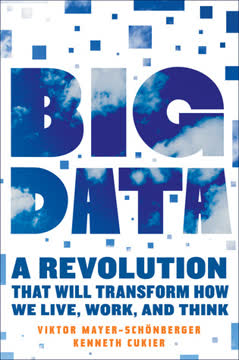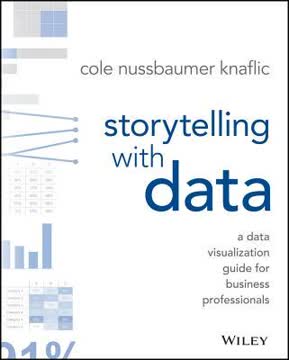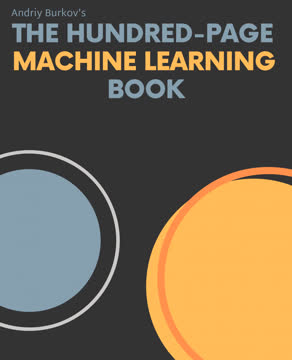Key Takeaways
1. Digital transformation is reshaping industries and threatening unprepared companies
"Companies that fail to digitally transform will be prime targets."
Extinction looms. The average lifespan of S&P 500 companies has dropped from 60 years in the 1950s to less than 20 years today. Half of the Fortune 500 companies from 2000 are no longer on the list. This accelerating turnover is driven by digital transformation – the integration of digital technology into all areas of business, fundamentally changing how companies operate and deliver value.
Adapt or die. Companies that fail to embrace digital transformation risk becoming irrelevant and extinct, like Blockbuster, Borders, and Kodak. However, those that successfully transform stand to gain enormous rewards:
- Improved operational efficiency
- Enhanced customer experiences
- New revenue streams and business models
- Competitive advantage in rapidly evolving markets
2. Cloud computing, big data, AI, and IoT are driving digital transformation
"Without cloud computing, digital transformation would not be possible."
Four key technologies are enabling and driving digital transformation:
- Cloud computing: Provides on-demand access to vast computing resources
- Big data: The ability to process and analyze massive, diverse datasets
- Artificial intelligence (AI): Enables machines to learn and make decisions
- Internet of Things (IoT): Networks of connected devices generating data
These technologies are converging to create unprecedented opportunities for innovation and disruption across industries. Cloud computing forms the foundation, providing the scalable infrastructure needed to handle big data and power AI applications. Big data analytics uncover insights from the vast amounts of information generated by businesses and IoT devices. AI automates processes and enables predictive capabilities. IoT connects the physical and digital worlds, generating real-time data for analysis.
3. AI and machine learning enable unprecedented insights and automation
"AI will profoundly change the way we work and live."
AI's transformative power comes from its ability to learn from data and make predictions or decisions without explicit programming. Machine learning algorithms can identify patterns and insights in massive datasets that would be impossible for humans to discern.
Key AI applications reshaping industries include:
- Predictive maintenance in manufacturing
- Fraud detection in financial services
- Personalized recommendations in retail
- Disease diagnosis and drug discovery in healthcare
- Autonomous vehicles in transportation
AI is not just automating routine tasks but augmenting human capabilities in complex decision-making roles. As AI systems become more sophisticated, they will increasingly work alongside humans, enhancing productivity and enabling new forms of creativity and problem-solving.
4. IoT creates vast networks of connected devices, generating valuable data
"IoT may be the single most important defining feature of the 21st-century economy."
IoT's exponential growth is creating an interconnected world where billions of devices constantly generate and share data. This data explosion enables unprecedented insights and optimization across industries:
- Smart grids in utilities
- Connected factories in manufacturing
- Precision agriculture in farming
- Telematics in transportation and logistics
- Wearable devices in healthcare
The true power of IoT emerges when combined with AI and big data analytics. This convergence allows organizations to:
- Predict equipment failures before they occur
- Optimize supply chains in real-time
- Personalize products and services at scale
- Create entirely new business models
5. Digital transformation requires a new technology stack and approach
"The problems that have to be addressed to solve the AI or IoT computing problem are nontrivial."
Traditional IT approaches fall short. The scale, complexity, and real-time nature of AI and IoT applications demand a new technology stack. Key components include:
- Elastic cloud computing for scalable processing and storage
- Big data platforms for handling diverse, high-velocity data
- AI and machine learning frameworks
- IoT device management and edge computing capabilities
- Advanced analytics and visualization tools
Organizations must move beyond simply "digitizing" existing processes. True transformation requires:
- Rethinking business models and value creation
- Redesigning processes around AI and data-driven insights
- Developing new skills and organizational structures
- Fostering a culture of innovation and continuous learning
6. Successful digital transformation demands CEO leadership and organizational change
"Digital transformation—to be successful—must be driven from the top down by the CEO, with full support from, and alignment across, all senior leaders and business functions."
CEO-driven transformation. Unlike previous technology adoptions, digital transformation cannot be delegated to IT departments. CEOs must:
- Articulate a clear vision for digital transformation
- Align the entire C-suite behind the initiative
- Appoint a Chief Digital Officer with authority and budget
- Create a culture that embraces innovation and risk-taking
- Invest in reskilling and upskilling the workforce
Organizational change is critical. Companies must:
- Break down silos between departments
- Adopt agile methodologies for faster innovation
- Empower employees with data and decision-making authority
- Redesign incentives and performance metrics
- Foster a learning culture with continuous education programs
7. China and the U.S. are engaged in an AI arms race with global implications
"AI will fundamentally determine the fate of the planet."
Geopolitical stakes. The race for AI supremacy between China and the U.S. has profound implications for global economic and military power. Key aspects include:
- China's ambitious national AI strategy and massive investments
- U.S. efforts to maintain technological leadership
- AI's potential to revolutionize warfare (e.g., autonomous weapons, cyber capabilities)
- Concerns over AI-enabled surveillance and social control
- Ethical considerations in AI development and deployment
The outcome of this competition will shape the global balance of power and the future of democracy. Organizations and governments worldwide must consider the strategic implications of AI development and adoption in their planning.
8. Organizations must act now to harness AI and IoT or risk extinction
"The stakes are high. Europe may either add €1.25 trillion of gross industrial value, or lose €605 billion of value by 2025, according to Roland Berger Strategy Consultants."
Urgent action required. The window for organizations to gain competitive advantage through digital transformation is rapidly closing. To succeed, companies should:
- Assess their current digital maturity and capabilities
- Develop a clear digital transformation strategy and roadmap
- Identify high-value use cases for AI and IoT implementation
- Invest in the necessary technology infrastructure and talent
- Partner with experienced technology providers and consultants
- Start with pilot projects to demonstrate value and build momentum
- Scale successful initiatives across the organization
Continuous evolution is key. Digital transformation is not a one-time project but an ongoing process of adaptation to rapidly evolving technologies and market conditions. Organizations must cultivate a culture of innovation and agility to thrive in the digital age.
Last updated:
FAQ
What's Digital Transformation: Survive and Thrive in an Era of Mass Extinction about?
- Focus on Digital Transformation: The book explores how organizations can navigate the challenges and opportunities presented by digital transformation, driven by technologies like cloud computing, big data, AI, and IoT.
- Existential Threat and Opportunity: It emphasizes that digital transformation poses a significant threat to traditional business models while offering unique opportunities for innovation and growth.
- CEO Leadership Required: Thomas M. Siebel argues that successful digital transformation must be driven from the top down, requiring the mandate and leadership of CEOs and senior executives.
Why should I read Digital Transformation by Thomas M. Siebel?
- Essential for Leaders: This book is crucial for CEOs and decision-makers who need to understand the implications of digital transformation on their organizations and industries.
- Real-World Examples: Siebel provides case studies from companies like 3M and Caterpillar, illustrating successful digital transformation initiatives.
- Actionable Insights: The book offers a CEO Action Plan with concrete steps for leaders to begin their digital transformation journey.
What are the key takeaways of Digital Transformation?
- Convergence of Technologies: The book highlights the confluence of cloud computing, big data, AI, and IoT as drivers of digital transformation.
- Survival of the Fittest: Organizations that fail to adapt risk extinction, with a statistic indicating that 40% of companies today may not survive the next decade.
- Importance of Data: Big data is emphasized as a critical resource for driving innovation and improving decision-making.
What is digital transformation according to Thomas M. Siebel?
- Intersection of Technologies: Siebel defines digital transformation as arising from the intersection of cloud computing, big data, IoT, and AI.
- Not Just IT Upgrades: He emphasizes that digital transformation involves fundamentally changing how organizations operate and deliver value.
- Economic Value Creation: The goal is to leverage these technologies to create economic value, agility, and speed in business operations.
What is the 10-point CEO Action Plan in Digital Transformation?
- Senior Leadership Engagement: The plan starts with engaging the senior CXO team to drive digital transformation.
- Incremental Wins: It encourages achieving quick wins to demonstrate value and build momentum for larger initiatives.
- Strategic Vision and Roadmap: Emphasizes the need for a clear strategic vision and a detailed roadmap to guide the transformation process.
How does Digital Transformation address the role of AI and IoT?
- AI and IoT as Drivers: The book identifies AI and IoT as key technologies driving digital transformation, optimizing operations and enhancing customer experiences.
- Integration of Technologies: Discusses how these technologies can be integrated into existing business processes to unlock new value and efficiencies.
- Future of Business: Argues that the convergence of AI and IoT will fundamentally change business operations, leading to new models and opportunities.
What challenges do organizations face in digital transformation according to Digital Transformation?
- Data Integration Complexity: Organizations struggle with integrating data from multiple legacy systems, hindering effective big data leverage.
- Cultural Resistance: Resistance to change within organizations, as employees and management may hesitate to adopt new technologies and processes.
- Skill Gaps: A shortage of skilled professionals in data science and AI presents a significant challenge for implementing digital transformation initiatives.
What does Thomas M. Siebel mean by "data moats" in Digital Transformation?
- Definition of Data Moats: Data moats refer to the competitive advantage achieved by effectively utilizing vast amounts of data.
- Exponential Value of Data: As organizations scale their data usage, the value derived increases exponentially, making it difficult for competitors to catch up.
- Protection Against Competition: By building data moats, companies create barriers to entry for new competitors, securing their market position.
What are some examples of successful digital transformation in Digital Transformation?
- ENGIE's Digital Transformation: Highlights ENGIE's efforts to leverage digital technologies to optimize energy production and improve customer engagement.
- Enel's Smart Grid Initiative: Enel's deployment of smart meters and predictive maintenance applications is presented as a case study in effective digital transformation.
- Caterpillar's Data Hub: Caterpillar's creation of an Enterprise Data Hub to manage its connected assets demonstrates how industrial companies can harness data for operational improvements.
What is the significance of leadership in Digital Transformation?
- CEO's Role: Emphasizes that the CEO must actively drive digital transformation, rather than delegating it to IT departments.
- C-Suite Alignment: Successful transformation requires alignment and commitment from the entire C-suite to ensure all business functions work towards common goals.
- Creating a Culture of Innovation: Leaders must foster a culture that encourages experimentation and innovation to adapt to the fast-paced digital landscape.
How does Thomas M. Siebel relate digital transformation to historical events in Digital Transformation?
- Punctuated Equilibrium: Draws parallels between digital transformation and the concept of punctuated equilibrium in evolutionary biology, suggesting rapid adaptation is necessary for survival.
- Historical Context: Provides historical examples of technological disruptions, such as the Industrial Revolution, to illustrate how significant changes can lead to both extinction and new opportunities.
- Lessons from the Past: Encourages leaders to learn from historical patterns of change to better navigate the current digital landscape.
What future trends does Digital Transformation predict?
- Increased AI Adoption: Predicts that AI will become increasingly integrated into business processes, driving efficiency and innovation across industries.
- Evolving Business Models: Organizations will need to rethink their business models to leverage digital technologies effectively and remain competitive.
- Global Competition: Warns that countries and companies failing to embrace digital transformation will fall behind in the global economy, emphasizing proactive adaptation.
Review Summary
Digital Transformation receives mixed reviews, with ratings ranging from 1 to 5 stars. Positive reviews praise the book for providing a comprehensive overview of digital transformation technologies and their impact on businesses. Critics argue that the content is repetitive, lacks depth, and offers little new information for those already familiar with the subject. Some readers find the book informative and insightful, while others consider it too general and boring. The book is recommended for CEOs and business leaders new to digital transformation concepts but may not be as valuable for tech-savvy readers.
Similar Books







Download PDF
Download EPUB
.epub digital book format is ideal for reading ebooks on phones, tablets, and e-readers.




